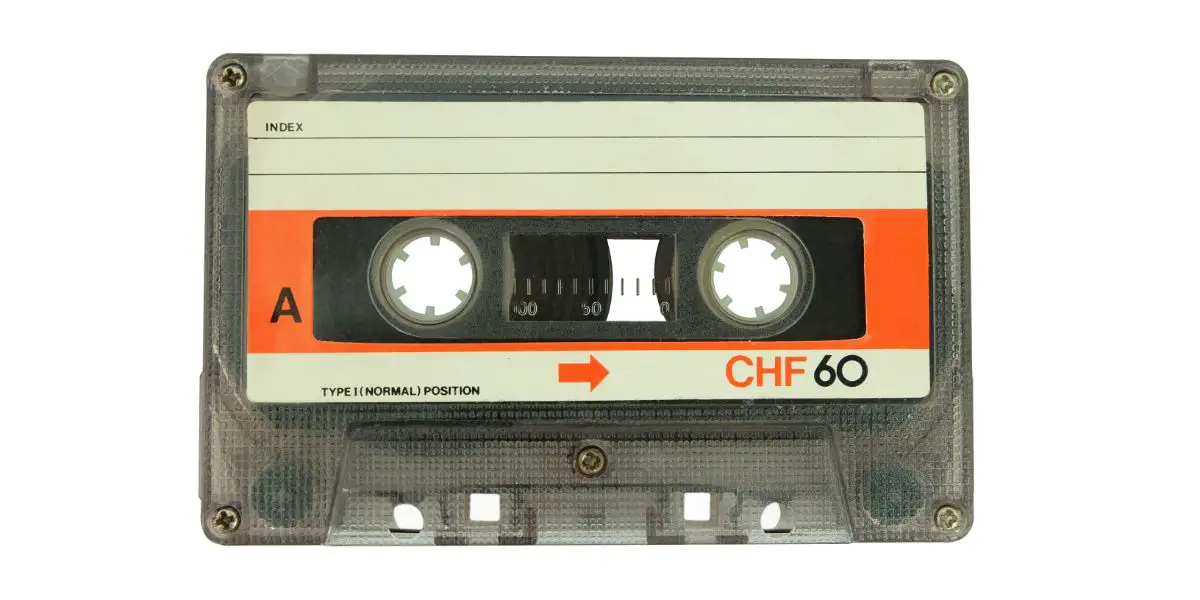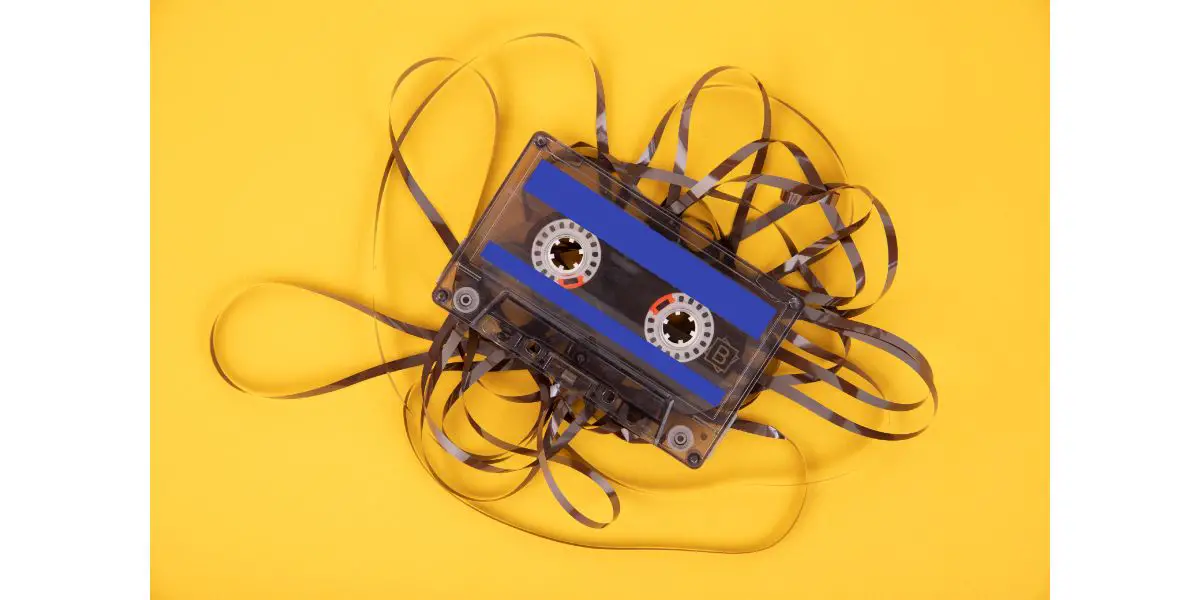Disclaimer: This post may contain affiliate links, meaning we get a small commission if you make a purchase through our links, at no cost to you. For more information, please visit our Disclaimer Page.
As of 2022, many people who enjoy music probably do so in digital form. Streaming music from your favorite apps is easy, and you can download tunes for offline play by putting files on your phone or tablet storage. However, the simple cassette tape was once a popular way to listen to audio. Much like the vinyl record, the cassette is experiencing a resurgence in recent years.
Some popular modern artists are choosing to release songs on magnetic tape, and these tapes can sell just as well as any sort of digital download. Although it can be difficult for anyone outside the industry to pinpoint why this renewed interest is happening, it may have something to do with the logistics of tape production.
Cassettes are relatively easy and inexpensive to manufacture when you put them up against other forms of physical media. This means it isn’t hard for production companies to put out wide releases that leave some funds for more projects or profits. Additionally, some people enjoy having physical media that is easy to carry. Cassettes can encounter issues, though, and we will explore some of the common ones here.
Table of Contents
Why Do Cassette Tapes Squeak?
As you play some of your tapes, you may notice that a squeaking noise could occur. In some cases, the volume level of this noise might not be enough to overpower the music or other audio to which you are listening. However, some people who enjoy tapes notice that the squeaking noise is very high-pitched and invasive.
Part of the issue here is in how the tape picks up dust or debris as it ages. When it does pick it up, the debris can deposit itself in a number of places throughout the structure of the cassette.
In most cases, you would clean off the tape regularly by removing dust from the parts of the tape you can reach. Similarly, playing the cassette back several times would also work to remove some of this dust, and you might move the magnetic tape back and forth several times in order to achieve this effect.
However, you can’t clean or reach all the parts of a cassette without a bit of effort. Your cassette may cry or squeal when debris lands in a spot you cannot clean easily.
Dust sometimes piles itself up on the back of the cassette. When this happens, the particles land in places that the head of the tape does not read. In other words, playing the audio back several times isn’t something that will work to clean the magnetic strip.
The part of the cassette in question faces a component called the pressure pad, and the result is a squealing or squeaking sound that you will hear each time you play the item. The debris is moving over the pressure pad as you play it, generating a squeaking noise that the speaker in your stereo will pick up and produce along with the audio.
It may be possible to eliminate this squeaking noise, but you will need some experience with cassettes and their care. There are some general guidelines you should try to follow when you clean the tape in this way.
- Find the pad on the tape.
- Once you do this, you’ll need to pull out the tape by some means. Be sure that you can do so carefully to avoid damaging the magnetic strip.
- Clean the pressure pad part of the unit. You can do this using a solution of alcohol and something like a cotton swab.
- Put the tape back together again.
- Try playing the cassette to see if the audio is free of any squeaking.
Why Do Cassette Tapes Drag?
A tape that drags may pull the magnetic strip through the player in a way that does not produce clear audio. Furthermore, this could cause the audio to sound much slower than it should.
If the drag effect is quite severe, it could cause parts of the tape to skip sections of the audio altogether. There are a few reasons why a cassette might seem to drag, and there are a couple of things you should be able to do yourself to troubleshoot the issue.
1. Tap the Tape Gently
This is an old method that many people used in the heyday of cassette tapes. Some types of tape drag could happen because the magnetic strip is uneven or bunched inside the spool. This would mean that the strip isn’t sitting in a way that negates interference when it passes over the tape head.
Some people may tap the side or corner of the tape to combat this issue. Although tapes come in plastic cases, it is important to be gentle when you try this method. Giving the item a few quick raps on a hard surface could settle the strip enough to allow playback that doesn’t have any noticeable drag.
2. Rewind and Fast Forward Repeatedly
This tip is similar to how you might clean parts of a cassette with debris. Moving the strip through the head can help to clear it up, but it can also take care of any audio drag you might experience.
There is no guarantee that this will fix it, but it is a simple and quick step you can try. However, you may need to move the tape forward and back several times through the player before you notice any drag reduction.
3. Try Another Player
If you don’t notice any improvements after the first steps, it is possible that the player itself could be causing a problem. Try to play your cassette differently and see if that makes the drag disappear. If it does, you know there is an issue with the previous player.
However, you may not need to scrap your original device. You may need to replace the belts on the old tape deck. This process can be complex, and you may have difficulty finding the appropriate parts for the model of deck you have. However, many manufacturers of this age designed their equipment so that people could repair it as needed.
How Do Cassette Tapes Get Tangled?
As you play your cassettes, they might end up giving you a horrible screeching noise. Typically, this sound would be followed by a complete stop in audio playback. Once you open your deck, you could find that the magnetic strip inside the tape is so tangled that it sticks out in all directions.
Some people say that the deck eats tapes in this case, which is not entirely untrue. The problem has to do with how the deck interacts with the tape.
A typical tape deck includes various mechanisms for moving the magnetic strip along in order to play the audio you hear. One of these parts is a rod that interacts with a special roller. As this rod spins, the take-up reel will also spin, and the movements here make sure that the strip keeps going along as it should.
However, there are some scenarios in which this reel will not spin. The rod may continue to do so, resulting in the strip unspooling itself and tangling within the mechanism of the player. As with some other solutions, the tape deck may need new parts to make sure this doesn’t continue to happen.
Otherwise, you can re-spool the tape into its housing once again. In dire circumstances, you may be able to splice in new pieces of the magnetic strip to compensate for any sections that might not play properly after the tangle error.
How Come Cassette Tape Will Not Eject?
There may be times when your audio cassette gets stuck in the player. Even trying to eject it normally may not help, and this problem could indicate an issue with the deck.
The only thing stopping the tape from coming out may be an eject button that doesn’t work properly. Should the button get stuck, you may be able to wiggle it a bit in order to get it going again.
If that does not work, you can try removing it entirely and looking for any defects. If necessary, you can try to install a new button that will work with the eject mechanism on the deck.
Should none of the above prove successful, you may need to take apart the player to get at the tape. This is also a good way to diagnose what the real problem might be. However, you may be able to lift the tape out normally before you disassemble the deck.
To do so, you can use a small, flat prying tool to lift the tape enough to pull it out. The design of your deck might prevent you from taking this step, though.
Why Does My Cassette Tape Keep Ejecting?
Some people may have a problem that is the complete opposite of what we discussed above. If so, they may find that their cassettes seem to eject constantly. When this happens, it could be due to some overheating issues that cause the deck to malfunction.
If you are using your tapes in an environment that can get quite warm, consider moving the unit to a cooler location with adequate ventilation. Try to play the tape again after some time and see if it works.
Otherwise, the mechanism that controls how the tape stays inside the deck could break, leaving you with the same problem. When you choose to eject a tape, pressing the button releases a locking mechanism that pushes the item up and out so that you can remove it.
Conversely, it should secure itself in place when you press the tape down or push the door of the deck closed. If this loading mechanism doesn’t work, you may need to replace it. Before you do this, you can try to see if any dust or debris is interfering with this part of the deck.
Conclusion
Cassettes are great items for those who may wish to take some physical audio media with them. They are lightweight and easy to store, but they can come with a few issues that make it hard for you to enjoy them.
Most of the mechanical problems they have are things the average listener could fix themselves. There are even tape repair kits that may help you with this process. Should you run into issues with your cassette tapes, some of our advice above may rectify things for you.


